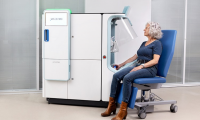-
Handheld Device Puts Power of Lab-Based Diagnostic Testing in the Palm of Your Hand
- Source: https://www.labmedica.com/molecular-diagnostics/articles/294801920/handheld-device-puts-power-of-lab-based-diagnostic-testing-in-the-palm-of-your-hand.html
- 120
- July 26, 2024
-
【EXPERT Q&A】What are the potential areas for improvement in the accuracy of medical equipment?
- Source: drugdu
- 90
- July 19, 2024
-
Morocco Medical Expo
- Source: drugdu
- 3,430
- July 12, 2024
-
Magnolia Medical Announces New Platform to Reduce Misdiagnosis of Sepsis
- Source: drugdu
- 74
- July 3, 2024
-
Portable Device Analyzes White Blood Cell Activity to Monitor Cancer Patients’ Health
- Source: drugdu
- 121
- June 25, 2024
-
Multinational companies target the trillion-dollar medical equipment “trade-in” market
- Source: drugdu
- 81
- June 1, 2024
-
HS and NICE announce plan to adopt innovative medical technologies for patients
- Source: drugdu
- 78
- June 1, 2024
-
Medical Fair China 2024
- Source: drugdu
- 152
- May 17, 2024
-
New Blood Test Device Modeled on Leeches to Help Diagnose Malaria
- Source: drugdu
- 103
- May 8, 2024
-
Robotic Blood Drawing Device to Revolutionize Sample Collection for Diagnostic Testing
- Source: https://www.labmedica.com/pathology/articles/294801059/robotic-blood-drawing-device-to-revolutionize-sample-collection-for-diagnostic-testing.html
- 152
- May 4, 2024
your submission has already been received.
OK
Subscribe
Please enter a valid Email address!
Submit
The most relevant industry news & insight will be sent to you every two weeks.













